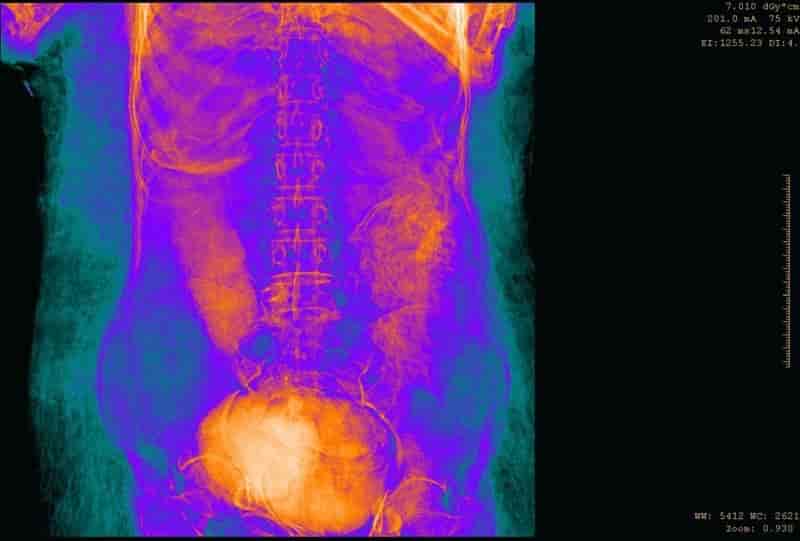A study carried out by Polish Egyptologists and which has just been published concludes that a mummy preserved in the National Museum in Warsaw, and which until now was believed to be that of an ancient priest, is actually that of a pregnant woman who lived in the 1st century BC.
A team of researchers from the Warsaw Mummy Project of the Polish Academy of Sciences, led by archaeologist Wojciech Ejsmond, proceeded to scan the mummy of who they believed to be an ancient Egyptian priest named Hor-Djehuty in 2016 which is kept in the National Museum in Warsaw.
But what would his surprise be when the scan showed what appeared to be the bones of a tiny foot on the alleged priest’s abdomen.
After thoroughly studying the images, the suspicions were confirmed: the foot belonged to a fetus that was still in the womb of whom, obviously, it was a woman and not Hor-Djehuty.

The priest who turned out to be a woman
The study carried out in 2016 on the supposed mummy of Hor-Djehuty, the results of which have just been published now in the Journal of Archaeological Science, also showed that the bones were too delicate to be those of a man, the male reproductive organs were missing and a three-dimensional reconstruction also revealed the presence of breasts.
All this, together with the fetus in her abdomen, left no room for doubt: the mummy was female.
“Our first surprise was that she did not have a penis, and that she had breasts and long hair, and we discovered that she was a pregnant woman. When we saw a small foot and then a small hand, we were really shocked,” says Marzena Ozarek-Szilke, anthropologist and co-author of the study.
“For unknown reasons, the fetus had not been removed from the abdomen during mummification. For this reason, the mummy is truly unique. Our mummy is the first identified so far in the world with a fetus in the womb,” she enthuses.
Wojciech Ejsmond, who is also the lead author of the study on this mummy. In fact, this is the first time a pregnant woman’s mummy has been found and represents a fascinating mystery. Who was this woman who was mummified with such care and who was accompanied by a rich set of amulets? And why was she mummified with her fetus inside the womb? So peculiar is the discovery that scientists have already dubbed her the “Mysterious Lady of the National Museum of Warsaw”.
The mummy and its sarcophagus were donated to the University of Warsaw in 1826 by a man named Jan Wezyk-Rudzki, who claimed that they came from ancient Thebes.
Years later, in 1917, they were transferred to the National Museum in Warsaw, where they have been kept ever since. The story is still curious.
At first, scholars thought that the mummy was that of a woman, but around 1920 the name that had been inscribed on the coffin, which turned out to be male, could be translated, that of a certain Hor-Djehuty, a character who held numerous positions of importance: “Scribe, priest of Horus, royal governor of the city of Petmiten, Hor-Djehuty, justified by voice, son of Padiamonemipet and lady Tanetmin.”
So to date, researchers had believed that it was the mummy of a man.

An ancient mystery
What was a female mummy doing in the coffin of an Egyptian priest? It all possibly dates back to the 19th century, when someone, perhaps antique dealers, put the woman’s mummy in a sarcophagus that did not belong to her, perhaps to pass her off as a more valuable object.
This fact seems to be supported by the obvious damage to some of the mummy’s bandages, possibly caused by looters from the 19th century who rummaged among them for amulets and valuable objects, according to the researchers.
Therefore, it is impossible to know who this woman was, or even if she came from Thebes, where the coffin was allegedly discovered; However, a few things can be concluded from her remains:
She died just over two thousand years ago, approximately in the 1st century BC, when she was between 20 and 30 years old, and fetal development suggests that she was between the 26th and 30th weeks of gestation.
The Mysterious Lady asks researchers some fascinating questions about ancient Egyptian spiritual beliefs.
Did the ancient Egyptians believe that unborn fetuses could reach the afterlife or is this mummy a strange anomaly?
The analyzes do not clarify the cause of her death, but the team believes that the study of the preserved soft tissues of the mummy could provide some clues.
“The high mortality during pregnancy and childbirth in those times is not a secret. Therefore, we believe that the pregnancy could have contributed in some way to the death of the young woman,” concludes Ejsmond.

Source: National Geographic






